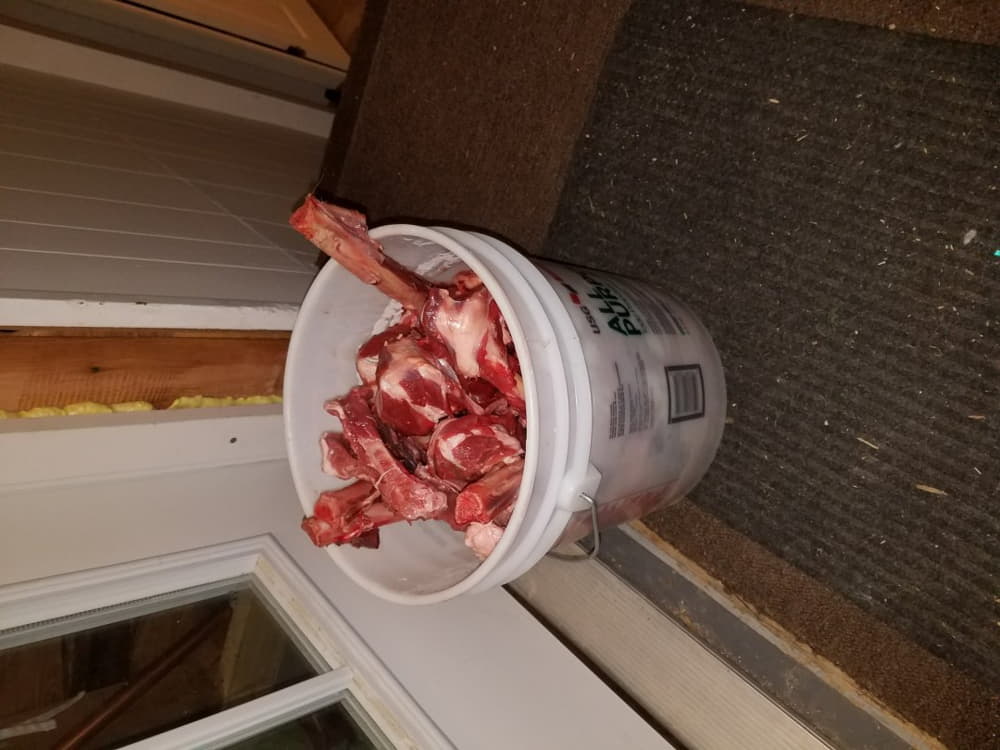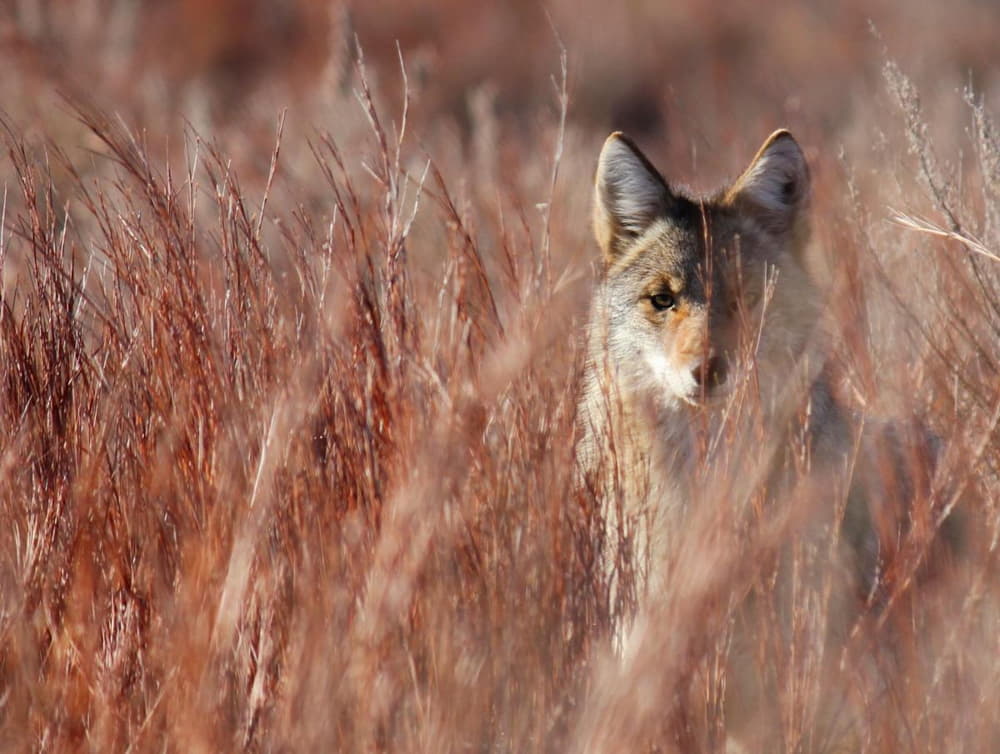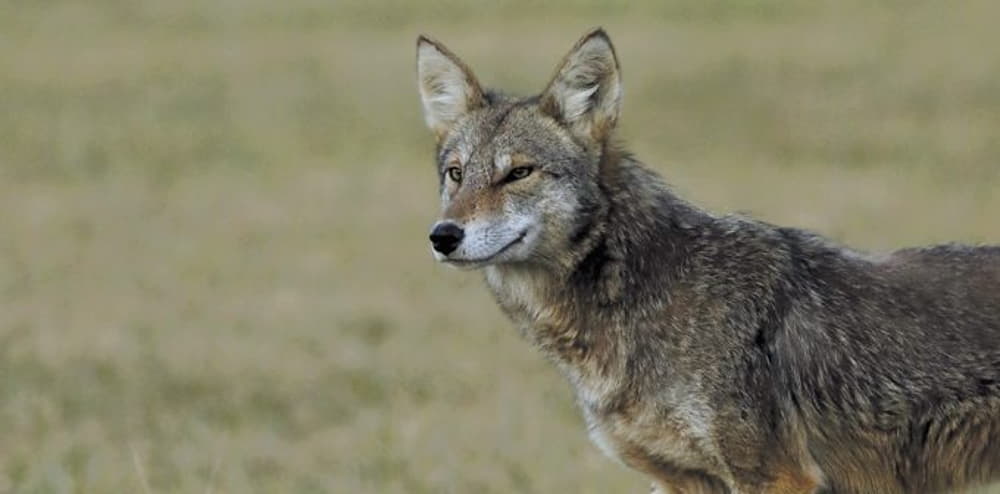If you are looking for a cheap and effective way to attract coyotes, making homemade coyote bait is a great idea. Handmade coyote bait is a cost-effective and customizable solution.
You can adapt the components to your personal needs and preferences when manufacturing your own bait, making it a versatile tool in coyote management tactics. Whether you want to protect cattle, conduct research, or improve your hunting success, homemade bait is a cost-effective alternative to commercial bait.
One of the primary benefits of homemade coyote food is the option to use locally obtained items. This can be very helpful in luring coyotes that are familiar with the area. Moreover, you have the flexibility to experiment with scents, flavors, and textures that may better entice these elusive creatures.
In this article, we will provide you with a step-by-step guide on how to make homebrew coyote bait, including ingredients, tools, and tips for success.
Table of Contents
How To Make Homemade Coyote Bait
Creating DIY coyote bait can be an effective strategy for wildlife management and hunting. While the actual ingredients can vary depending on your personal aims and local requirements, here’s the most basic guide to get you started.
Ingredients And Tools For Making Coyote Bait
Before starting to make bait for coyotes, you need to prepare all the necessary ingredients and tools.
Ingredients
- Meat: The major element in most coyote baits is meat, which should be fresh and preferably from a domestic animal such as beef, chicken, rabbit, or pork. Depending on the recipe, you can use ground meat or entire chunks of flesh.
- Scent Attractants: Add fragrance attractants like fish oil, anise oil, or skunk essence to the bait to make it more appealing. These scents mimic prey or rival animals, drawing coyotes closer. You can find these ingredients at hunting stores or online.
- Sweeteners: Sweeteners such as honey, molasses, or sugar can help cover any bitter or disagreeable flavors in the bait and make it more enticing to coyotes.
- Binder: A binder like oatmeal or cornmeal can help hold the bait together so that it stays on your trap or lure longer.
- Oils and Fats: Vegetable oils or animal fats can be added to extend the scent’s longevity and make the bait more enticing.
- Spices: Optional spices like garlic powder, onion powder, or cayenne pepper can add extra flavor and appeal to your bait.

Tools
Making DIY coyote bait normally does not necessitate the use of many specialized tools. Here are the essential tools and equipment you’ll require:
- Cutting and Chopping Tools: Depending on the meat you choose, you may need a knife and cutting board to chop or slice the meat into small pieces.
- Mixing Bowl: A large mixing bowl is essential for combining all the ingredients.
- Storage Containers: You’ll need airtight containers or resealable bags to store the finished bait. Make sure they are odor-proof to contain the scent.
- Other tools: You may also need to use gloves or a blender depending on your personal needs.
How To Make
Let’s get started on your own coyote bait now that you have all of the components and tools. For the best results, follow 7 steps:
- Prepare the meat: If you’re using entire slabs of meat, break them into small bits that coyotes can easily consume. When you’re using ground meat, thoroughly mix it with your hands until it’s evenly distributed. Fresh or spoiled meat scraps work well. Avoid using meat treated with chemicals.
- Add scent attractants: In a large mixing bowl, combine the meat with your chosen scent attractants. Use about 1-2 tablespoons of attractant per pound of meat. Mix thoroughly to ensure an even distribution.
- Add Sweeteners: Mix in your preferred sweetener. Use around 1/4 to 1/2 cup per pound of meat. Stir until the sweetness is distributed evenly.
- Mix oils and fats: Incorporate the oils or fats into the mixture with the same amount as the sweetener. Vegetable oils or animal fats can aid in the distribution of smell and flavor. They also provide a level of richness to the bait, which might make it more enticing. Make sure the mixture is well mixed.
- Add binder and spices: Mix in your binder and any optional spices like garlic powder, onion powder, or cayenne pepper to enhance the aroma. Making sure everything is well blended and forms a sticky mass.
- Shape the bait: Take small amounts of the mixture and roll them into balls or patties, depending on your preference. Don’t make them too big, as this will make it harder for coyotes to eat them quickly.
- Store the bait: Place your own coyote bait in a sealable plastic bag or container and store it in a cool, dry place until ready to use. This helps maintain its effectiveness.
Handcrafted Coyote Bait Tips
Creating effective handcrafted coyote bait requires careful consideration of ingredients and preparation techniques.
- Avoid using meat treated with chemicals or preservatives.
- Choosing high-quality scent attractants will yield better results.
- Balance Scents and Flavors: Strive for a balanced combination of scent and flavor in your bait. Coyotes rely primarily on their sense of smell, so make sure the bait has a strong, enticing scent.
- Add Spices Sparingly: Use spices like garlic powder, onion powder, or cayenne pepper in moderation. These can enhance the scent and flavor of the bait but should not overpower it.
- Experiment and Adapt: Coyotes in different parts of the country may react differently to bait. Experiment with different ingredients and aroma combinations to determine what works best in your environment. Be willing to change your bait recipe based on the outcomes.
- Baiting coyotes may require patience. It may take time for coyotes to discover and become accustomed to the bait. Regularly check and refresh your bait stations as needed.
- Document and Learn: Keep a log of your baiting efforts, noting what worked and what didn’t. This documentation can help you refine your baiting strategy over time.
Handmade Coyote Bait Vs. Commercial Options
There are many types of bait for coyotes available on the market today. So let’s see what the pros and cons are when you make your own coyote bait compared to available products.
Pros:
- You can adapt your recipe to local coyote preferences and behaviors.
- You can save money by using inexpensive ingredients instead of pricey commercial baits.
- Some commercial baits contain potentially dangerous chemicals or preservatives, which you may avoid.
Cons:
- You might not have all of the necessary components or tools.
- Your recipe might not work in attracting coyotes in your location.
- Using handmade baits for trapping or hunting may be subject to regulatory limits or prohibitions.

Frequently Asked Questions
How much bait should I use when trapping coyotes?
The size of your trap and the quantity of coyotes in the area will determine how much bait you use. A decent rule of thumb is to use enough bait to cover the trap trigger or to attract them to your hunting area.
How often should I check my coyote traps?
It’s important to check your coyote traps at least once a day to ensure that any trapped animals are not suffering or dying in the trap. Check with local regulations for specific guidelines on trap checking frequency.
Can homemade coyote feed attract other animals besides coyotes?
Yes, homemade coyote feed can attract other animals like raccoons, foxes, and domestic dogs. Be sure to place your bait in a secure location and use appropriate traps or lures to target only coyotes.
Is it legal to use DIY coyote lure bait for trapping or hunting?
Check with your local laws and regulations before using DIY coyote lure for trapping or hunting. In some areas, there may be restrictions on the type of bait, the method of trapping, or the time of year when trapping is allowed.
Final Thoughts
Making homemade coyote bait can be a creative, cost-efficient, and successful approach to lure coyotes to your traps or hunting grounds. You can tailor a formula to your area’s coyote population, interests, and behavior by following our step-by-step tutorial and advice. Remember to store your bait correctly, check your traps often, and observe all applicable rules and regulations. With patience and effort, your own coyote bait can help you successfully catch or hunt this elusive creature.

